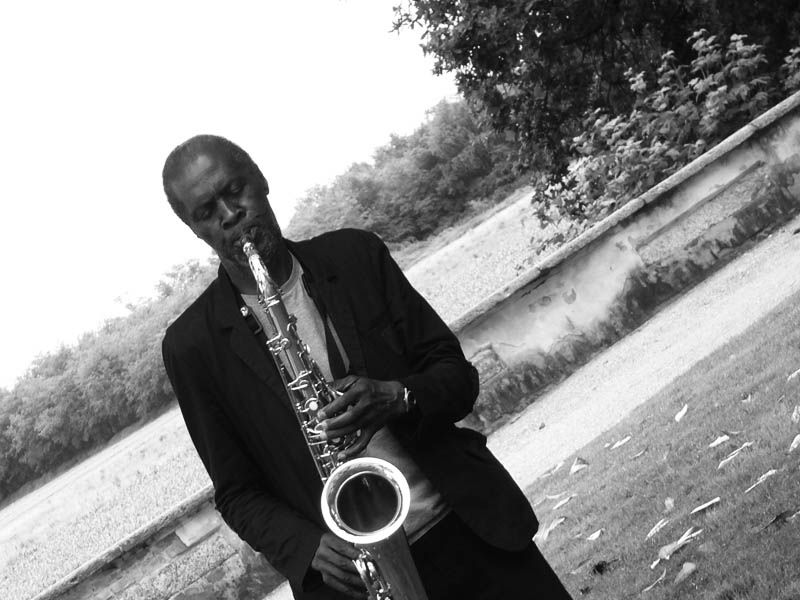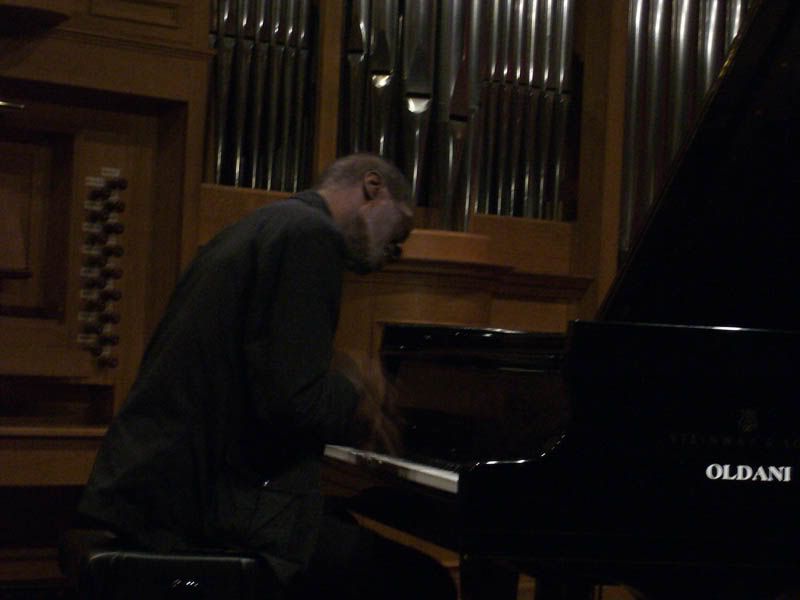Solo Saxophone
Novara Jazz, Cascina Picchetti, 12.00 a.m.
Solo Piano
Conservatorio Cantelli, Novara, 20.00 p.m.
June 2, 2011
Words + Photos: Gian Paolo Galasi
 |
| Charles Gayle, Cascina Picchetti, June 2, 2011 |
This year's edition of Novara Jazz will stand up for a couple of remarkable highlights: Ebo Taylor, who played in Piazza Duomo on May 27 with his Afrobeat hot-flavored call-up, and a couple of exhibitions, in the same day, by Charles Gayle. New York based saxophone and piano player is truly achieving Coltrane's and Ayler's legacy, both on a stylistic and personal level. Gayle is part of a post-bop world that, even before the so-called new thing started harassing the scene as a demanding music-to-listen-to right in the middle of the '60s, waving on his flags statements like Spiritual Unity, wasn't completely feeling at ease with tricky chord changes and bebop jumping out of diminished 7th, even if that was, at the time, the most fashionable way to express yourself.
In fact, while jazzmen, after Parker and Gillespie more orthodox followers, tried to warm and cool music with always excellent but as different results, as the likes of Miles Davis, George Russell, Oliver Nelson, there was an unprecedented and parallel world of, mostly, unsung heroes, that were trying to go back to their gospel and church roots. Charles Gayle, as his more succesfull, posthumously speaking, fellow Albert Ayler, drew heavily on chants and prayers. Picking up a record like Forgiveness (Not Two, 2008), and skimming through the titles, like 'Living Waters', 'Glory, Glory, Glory', 'Forgiveness', makes widely noticeable their being coherently in line with 'The Bells', 'Holy, Holy, Holy', 'Initiation'.
Surprisingly enough, Gayle's voice on alto is very related to Ayler's. But while the latter's phrasing was shakey, nervous, confrontational, the former's more gentle, chubby, and in some way more devoted to the way another tenor master, John Coltrane, was usually binding together his statements, at least in a period of his career: starting a line, developing, then coming back to a previous point and going ahead again from that. More spacey, less torrential. Check out his version of 'Giant Steps' to feel what coming from a demanding development of a coherent tought back to his straight essence would mean.
 |
| Charles Gayle, Conservatorio Cantelli, Novara, June 2, 2011 |
Being an open space the ideal venue for a solo alto saxophone or not, Gayle's set was warm, confidential, friendly. The night, in Novara's Academy of Music, a gorgeously fixed old Steinway embellished with full and rich resonances his curling, striding, deep, dissonant, but utterly melodic playing. Whereas he so often layered the bottom to the peak, using even his full arm on the keyboard, or chuckling gently his fingers, the lightness of his touch in both those gestures and in all the possible ranges in between remains a constant, and maybe Gayle's proper, excited but jaunty and bright signature.
Clusters and melodies are both interspersed the one with the other, bulding up a language that openly moves from jazz tradition but that evolves in a personal statement in which what can seems apparently fuzzy is, in fact, a grooving, hazy network of cross-references, from Thelonious Monk to Art Tatum, from James P. Johnson to Cecil Taylor. Charles Gayle lived for many years following his highly personal options, and as a result he is truly suitable for speaking not only for himself but for a rich and full tradition of inside track shapers.
See Also:
Howard Mandel interview to Charles Gayle on The Wire
James Lindbloom interview to Charles Gayle on Perfect Sound Forever

No comments:
Post a Comment